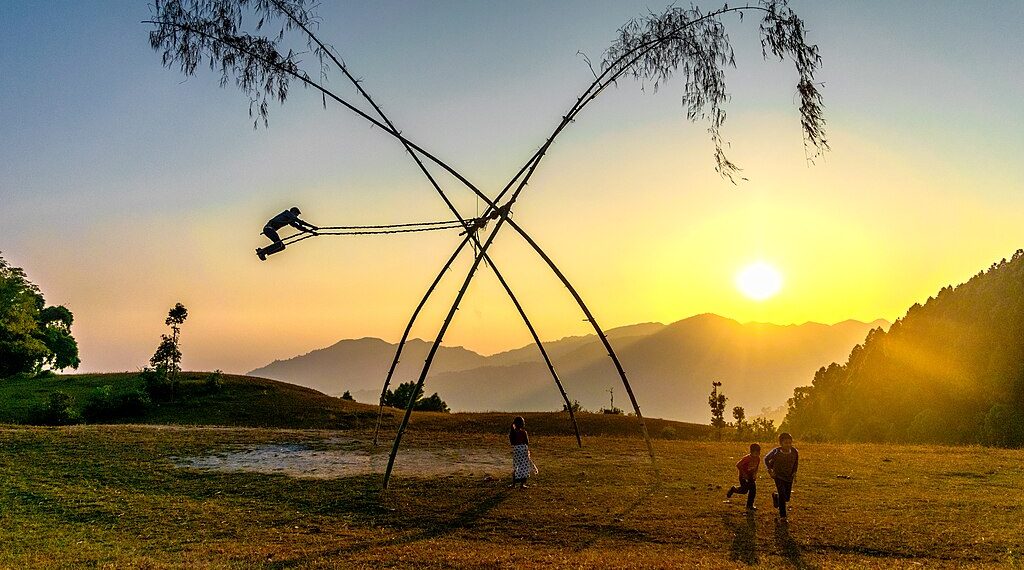Hindus across Nepal are celebrating Dashain, the country’s biggest and most widely observed festival, with prayers, family gatherings, and cultural traditions. The festival, which symbolizes the victory of good over evil, brings together relatives and communities in rituals that run for fifteen days. The tenth day, a sort of main event, was observed on Thursday.
From the capital to rural villages, temples dedicated to Goddess Durga have drawn large crowds of worshippers. This festival includes age-old practices such as animal sacrifices, kite flying, and the exchange of blessings with elders. The festival is also the time for enjoying delicacies, leaving the ground on lingey ping (a bamboo-based local swing), and travelling locally. Observers sometimes travel long distances to meet their relatives and receive blessings.
Dashain, also known as Vijaya Dashami, is marked by the offering of tika (red-coloured rice on the forehead) and jamara (saplings of barley, wheat, and maize) from the tenth day onward, when younger members of families receive blessings from elders. The festival is also one of the longest public holidays in the country, making it the occasion for Nepalese working and studying in urban centers to return home in significant numbers.
Government agencies have urged safe travel amid the festival rush. A number of accidents happen in this festive season. Security forces have also been mobilized across the country to manage crowds and traffic.
The celebration, deeply rooted in Hindu culture, serves as both a religious and cultural marker, reinforcing family bonds and national identity.




